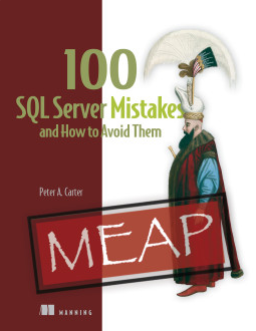At my Filestream/Filetable talk yesterday at SQL Intersection, someone asked me about programmatically adding a file to a Filetable. Easy enough, I thought, since I’d seen someone do this in .NET and was thinking this has to be simple. Turns out it’s not quite so simple.
I was assuming that I could use the GetDescendent method of the hierarchy ID for the path_locator field to get the path you needed and insert that. It turns out that’s not correct.
I searched around when that didn’t work and found this post from Bob Beauchemin and a question on StackOverflow. If the two, Bob’s post explains things better. He actually dug into the Filetable, looking at the constraints and defaults in the schema. If you do that, you can find this constraint on the path_locator field:
The code in this constraint looks like this, which matches with what Bob and SO show as the way to calculate the path.
ALTER TABLE [dbo].[Explorer] ADD CONSTRAINT [DF__Explorer__path_l__6477ECF3] DEFAULT (CONVERT(HIERARCHYID, '/' + CONVERT(VARCHAR(20), CONVERT(BIGINT, SUBSTRING(CONVERT(BINARY(16), NEWID()), 1, 6))) + '.' + CONVERT(VARCHAR(20), CONVERT(BIGINT, SUBSTRING(CONVERT(BINARY(16), NEWID()), 7, 6))) + '.' + CONVERT(VARCHAR(20), CONVERT(BIGINT, SUBSTRING(CONVERT(BINARY(16), NEWID()), 13, 4))) + '/')) FOR [path_locator] GO
This means that your insert statement needs to perform this calculation. For me, I decided to insert a jpg of a circle into the table, under the folder “books”. The folder looks like this:
Since I have the binary values for a circle image, I’ll use those, and then the code below. The first part of this code calculates the new path that’s needed, basing this on the path_locator value for the “Books” folder, and then building a NewID(). From there, it’s a simple insert.
DECLARE @path HIERARCHYID DECLARE @new_path VARCHAR(675) SELECT @path = path_locator FROM dbo.Explorer WHERE name = 'Books' SELECT @new_path = @path.ToString() + CONVERT(VARCHAR(20), CONVERT(BIGINT, SUBSTRING(CONVERT(BINARY(16), NEWID()), 1, 6))) + '.' + CONVERT(VARCHAR(20), CONVERT(BIGINT, SUBSTRING(CONVERT(BINARY(16), NEWID()), 7, 6))) + '.' + CONVERT(VARCHAR(20), CONVERT(BIGINT, SUBSTRING(CONVERT(BINARY(16), NEWID()), 13, 4))) + '/' INSERT INTO dbo.Explorer ( stream_id , file_stream , name , path_locator ) VALUES ( NEWID() , 0xFFD8FFE000104A46494600010101006000600000FFE100684578696600004D4D002A000000080004011A0005000000010000003E011B0005000000010000004601280003000000010002000001310002000000120000004E00000000000000600000000100000060000000015061696E742E4E45542076332E352E313000FFDB0043000201010201010202020202020202030503030303030604040305070607070706070708090B0908080A0807070A0D0A0A0B0C0C0C0C07090E0F0D0C0E0B0C0C0CFFDB004301020202030303060303060C0807080C0C0C0C0C0C0C0C0C0C0C0C0C0C0C0C0C0C0C0C0C0C0C0C0C0C0C0C0C0C0C0C0C0C0C0C0C0C0C0C0C0C0C0C0C0C0C0C0C0CFFC0001108000A000D03012200021101031101FFC4001F0000010501010101010100000000000000000102030405060708090A0BFFC400B5100002010303020403050504040000017D01020300041105122131410613516107227114328191A1082342B1C11552D1F02433627282090A161718191A25262728292A3435363738393A434445464748494A535455565758595A636465666768696A737475767778797A838485868788898A92939495969798999AA2A3A4A5A6A7A8A9AAB2B3B4B5B6B7B8B9BAC2C3C4C5C6C7C8C9CAD2D3D4D5D6D7D8D9DAE1E2E3E4E5E6E7E8E9EAF1F2F3F4F5F6F7F8F9FAFFC4001F0100030101010101010101010000000000000102030405060708090A0BFFC400B51100020102040403040705040400010277000102031104052131061241510761711322328108144291A1B1C109233352F0156272D10A162434E125F11718191A262728292A35363738393A434445464748494A535455565758595A636465666768696A737475767778797A82838485868788898A92939495969798999AA2A3A4A5A6A7A8A9AAB2B3B4B5B6B7B8B9BAC2C3C4C5C6C7C8C9CAD2D3D4D5D6D7D8D9DAE2E3E4E5E6E7E8E9EAF2F3F4F5F6F7F8F9FAFFDA000C03010002110311003F00E97FE0E87FF82CA7ED35FB04FED85E09F03FC2BD6A5F87BE1097408B5C4D523D2ADAF1BC41746795248CBDC4722F970848C18940399373E43478FD75FF00827CFC68F177ED17FB0FFC2AF1D78F3461A078C7C59E19B2D4F57B110B42B14F244199846DF346AFC384392A1C024E335E95E2EF87BE1FF880968BAF687A3EB6B612F9F6C2FECA3B916F27F7D3783B5BDC60D6C5007FFFD9 , 'Circle.jpg' , @new_path ); go
If I now look at the folder, I see this:
An insert into the folder of a file.
I could easily adapt this to stream in the binary values from a .NET application, or OPENROWSET, but this works well enough.








I wonder, however, if using the calculation in this constraint will be a supportable calculation. That is, could this calculation in the default constraint be subject to change from one version to another, given that it is not documented in BOL, etc.
I had to solve the same problem for a LOB application, and chose instead to stick with the documented GetReparentedPath() method on the hierarchyid path_locator column.
Since the filestream operations are transacted, you can insert directly to the root (default location) by simply using INSERT INTO (name, file_stream) OUTPUT inserted.stream_id VALUES (, ), capturing the stream_id from the insert statement, and then use an update to set the final location as part of the same transaction (requires you to retrieve the path_locator of the destination folder just like in your examples:
UPDATE SET path_locator = path_locator.GetReparentedValue(hierarchyid::GetRoot(), @ParentPath) WHERE stream_id = @StreamId
Since the insert by default goes to the root, the parameter for the old parent can use the documented hierarchy::GetRoot() method. And since the update statement is just a single row update to the path_locator and parent_path_locator columns (not moving the actual LOB content) the performance implications of using a 2 statement process are negligent.
Thoughts?
LikeLike
Good points, and I think your method if probably better in terms of long term maintainable code. I have been looking more at the hierarchyID and was testing the various functions. I actually am working on a post using your method, though I was trying to get the insert into a subfolder. Perhaps I’ll use your idea instead.
LikeLike